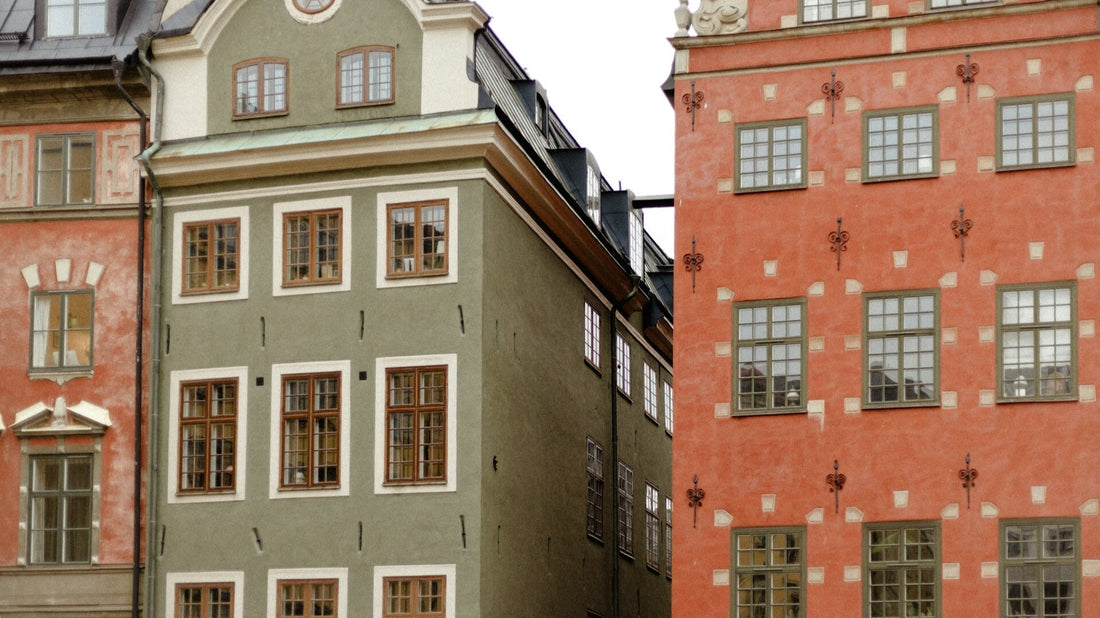Hej everyone,
Swedish glass design is world-renowned for its minimalist beauty and refined craftsmanship. But who are the creative minds behind these unique works of art? One of the most important names in the history of Nordic glass design is Ingeborg Lundin.
As one of the first female designers to achieve great success in the Swedish glass industry, Lundin's work for Orrefors has had a lasting impact on modern glass design.
Her style? Lightness, transparency, and an organic design language that continues to fascinate today.
But what exactly made her work so revolutionary? What works did she leave behind, and why is she considered one of the pioneers of Scandinavian design? Let's delve into the world of Ingeborg Lundin—a woman who brought glass to life.
Who was Ingeborg Lundin?
Ingeborg Lundin was born in Sweden in 1921 and developed a passion for art and design at an early age. She studied at the renowned Konstfack Art Academy in Stockholm, which has produced many of Sweden's most important designers.
After graduating, she initially began working as a graphic designer, but her true talent lay in the design of glass objects. In 1947, she joined the famous Orrefors glass factory—a decision that would change Swedish glass design forever.
As the first female glass designer at Orrefors, she initially struggled to establish herself in a male-dominated industry. But her fresh, modern perspective quickly won over the crowd—and she soon became one of the most important creative minds of her time.
Orrefors – The stage for your talent
The Swedish glass manufacturer Orrefors was founded in 1898 and developed into one of Europe's leading glass manufacturers during the 20th century. Famous designers such as Simon Gate and Edward Hald had already laid the foundation for the so-called "Swedish Grace" design in the 1920s and 1930s – an elegant, simple, and functional design language.
But Lundin brought a new lightness and playfulness to the Orrefors portfolio. While many of her predecessors focused on solid, decorative glasswork, she experimented with airy forms and delicate proportions.
The “Äpplet” vase – A design that made history
In 1957, Ingeborg Lundin presented perhaps her most famous work at the Milan Triennale: the vase “Äpplet” (Swedish for “apple”).
What makes the Äpplet vase so special?
✔ Spherical, almost floating design – A vase that appears as light as a soap bubble.
✔ Reduction to the essentials – No unnecessary decorations, just pure form and transparency.
✔ Play with light and space – The vase changes its effect depending on the perspective and incidence of light.
The jury of the Milan Triennale was enthusiastic – and Lundin won the gold medal. This design made her internationally famous overnight and set a new standard for modern glass design.
Today, the Äpplet vase is a sought-after collector's item and one of the most famous Swedish glass objects of the 20th century.
More iconic designs by Ingeborg Lundin
In addition to the Äpplet vase, Lundin created numerous other impressive glass objects. Particularly noteworthy are her:
🔹 Crystal glasses with filigree engravings: She experimented with floral patterns and geometric shapes.
🔹 Lightweight bowls and vases: Her designs often appeared as if formed from air – thin-walled, elegant and functional at the same time.
🔹 Experimental glass objects: Lundin was not afraid to try out new techniques – from sandblasted glass to avant-garde forms.
What all her works have in common is an unmistakable elegance and timeless aesthetic that still appears modern even decades later.
Her influence on modern glass design
Ingeborg Lundin was more than a talented designer – she was a pioneer who proved that glass design doesn’t have to be just masculine and monumental.
Three reasons why it had a lasting impact on glass design:
✔ Introduction of lightness and transparency – Her works show that glass can appear airy and almost weightless.
✔ Influence on subsequent designers – Many later glass designers were inspired by their reduced, elegant design language.
✔ Empowering women in the design world – As one of the first successful female glass designers in Sweden, she paved the way for other women in the industry.
Today, Lundin's works are represented in museums and collections worldwide, including the Nationalmuseum Stockholm and the Victoria & Albert Museum in London.
Why her designs are more in demand today than ever
Although Lundin passed away in 1992, her design is currently experiencing a renaissance. Demand for vintage Orrefors glass has increased significantly in recent years—especially for her handcrafted, minimalist pieces.
Why is that?
✔ The trend towards Scandinavian minimalism – timeless, clear shapes are more in demand than ever.
✔ Collectibles with increasing value – your works achieve high prices at auctions.
✔ Sustainable design – High-quality craftsmanship instead of mass production.
Anyone who owns an original Lundin design is not just holding a piece of glass in their hands, but a masterpiece of Scandinavian design history.
Conclusion: The lightness of glass – Lundin’s legacy
With her glass designs, Ingeborg Lundin has proven that minimalism can be fascinating rather than boring. Her works are a homage to light, transparency, and the beauty of simple forms.
Her courage to assert herself in a male-dominated industry, her unique design language and her influence on modern glass design make her one of the most important designers of the 20th century.
Perhaps you'll keep an eye out for one of their creations at the next vintage market or antique shop – because one thing is certain: a Lundin original is not just an investment in design, but in pure aesthetics.

